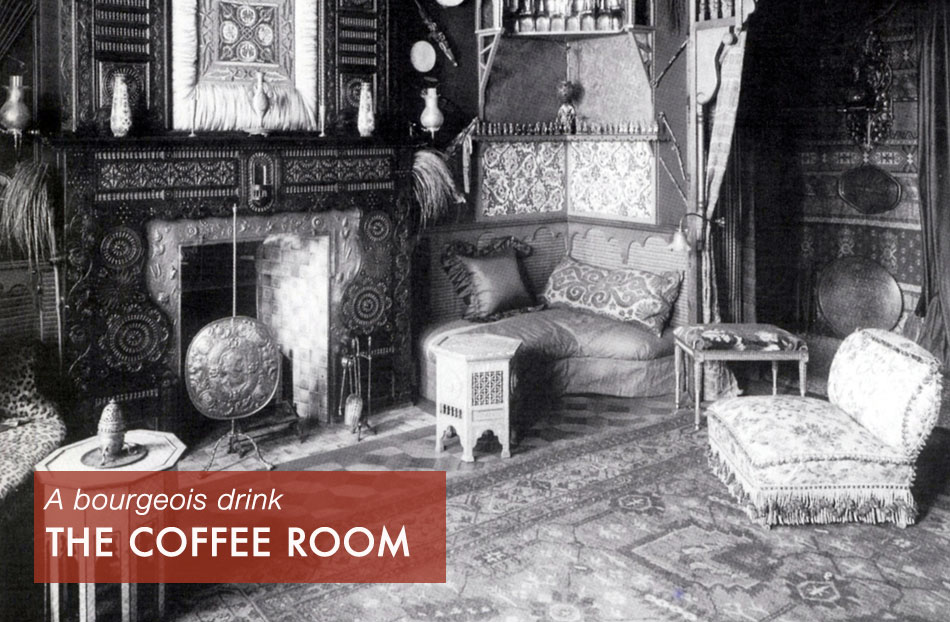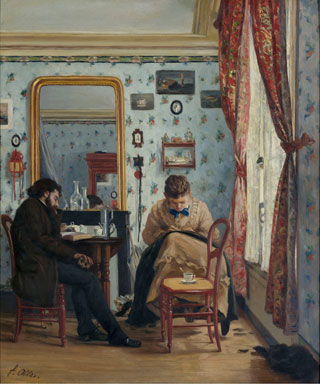

Francisco Oller, The Student, c. 1874. Paris, Musée d'Orsay
Top: Eastern-style sitting room, c. 1893
With the advent of psychoanalysis in the early 20th century, dietary habits, the appetite and foods were often subjects of psychological interpretation and coffee rose in the esteem of the middle classes. Its stimulant effect on the muscles and brain was particularly appreciated, and it was recommended for boosting one's IQ. In central European Trieste, the new home of the wealthy middle-class Zeno, a fictional figure created by Italo Svevo, even had a room devoted specifically to drinking coffee.
"On returning from the honeymoon, I was surprised because I had never lived in such a warm and comfortable home. Augusta brought into it all the conveniences she had had in her own home, but also many others she invented herself. The bathroom, which since time immemorial had always been at the end of a long corridor, half a kilometer from my bedroom, was now next to our room, and it was supplied with a greater number of faucets. Then a little area near the pantry was converted into a coffee room, furnished with padded carpets and great leather armchairs. We spent an hour or so there every day after lunch. Against my wish, it contained everything necessary for smoking. My little study, too, though I did everything to defend it, underwent alterations. I was afraid the changes would make it hateful to me, but, on the contrary, I quickly realized that only now had it become possible to live in. She arranged its lighting so that I could read while seated at my desk or sprawled in a chair or stretched out on the sofa. She even provided a music stand for the violin, with its own little light that illuminated the music without hurting my eyes. There too, and also against my wishes, I was accompanied by all the equipment required for a peaceful smoke."
Italo Svevo, Zeno's Conscience, 1923 (translated from the italian by William Weaver)
